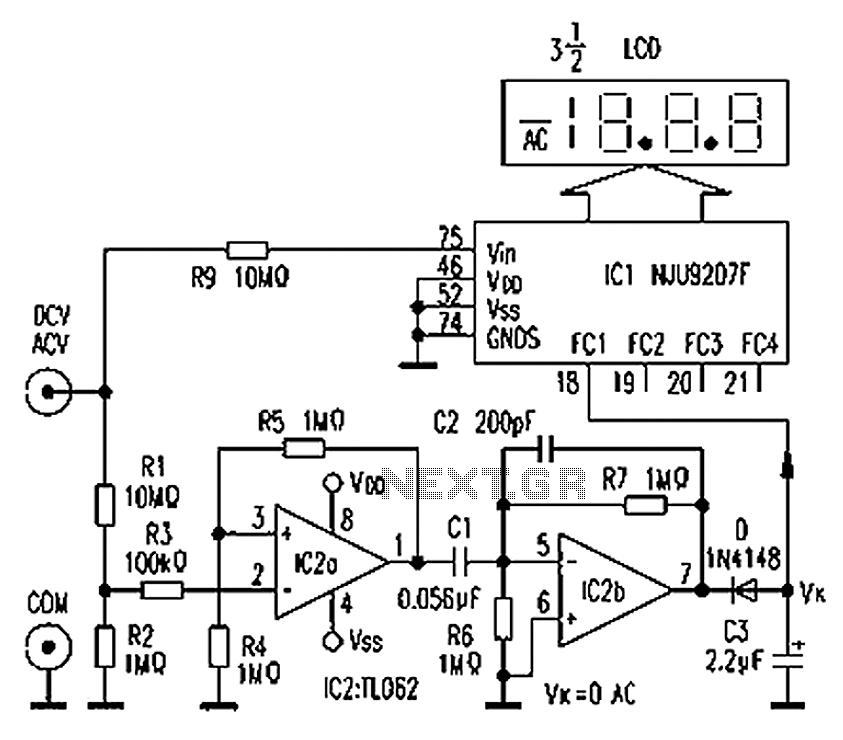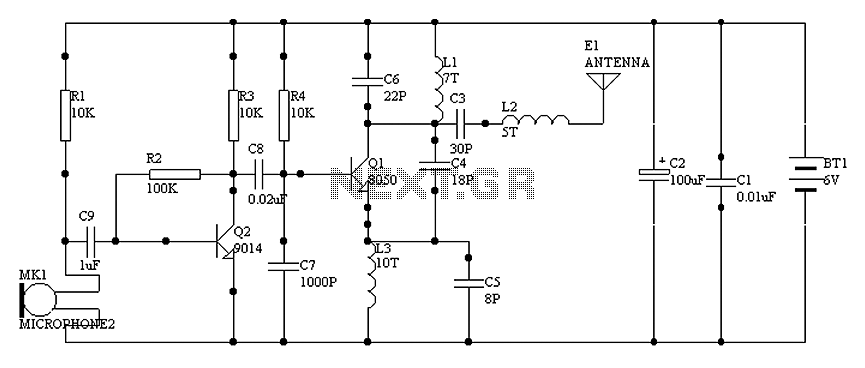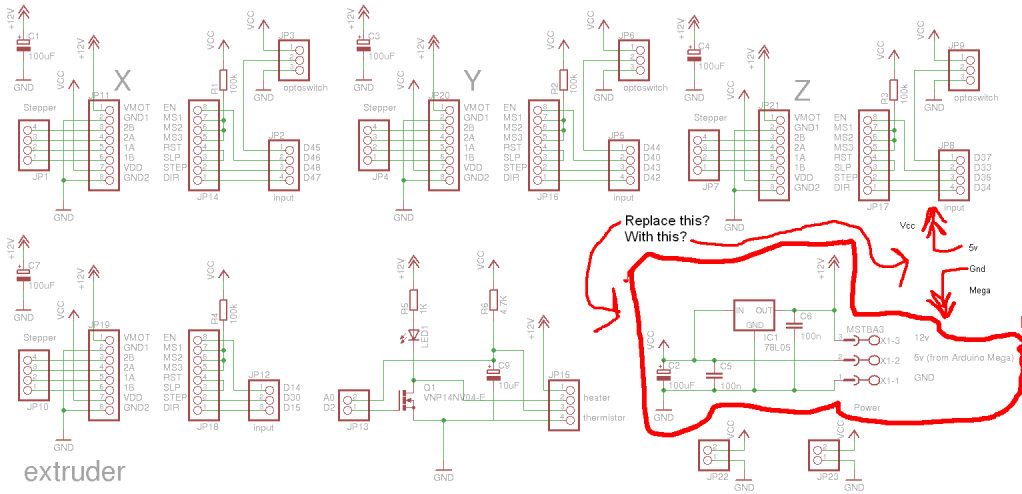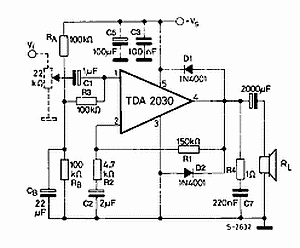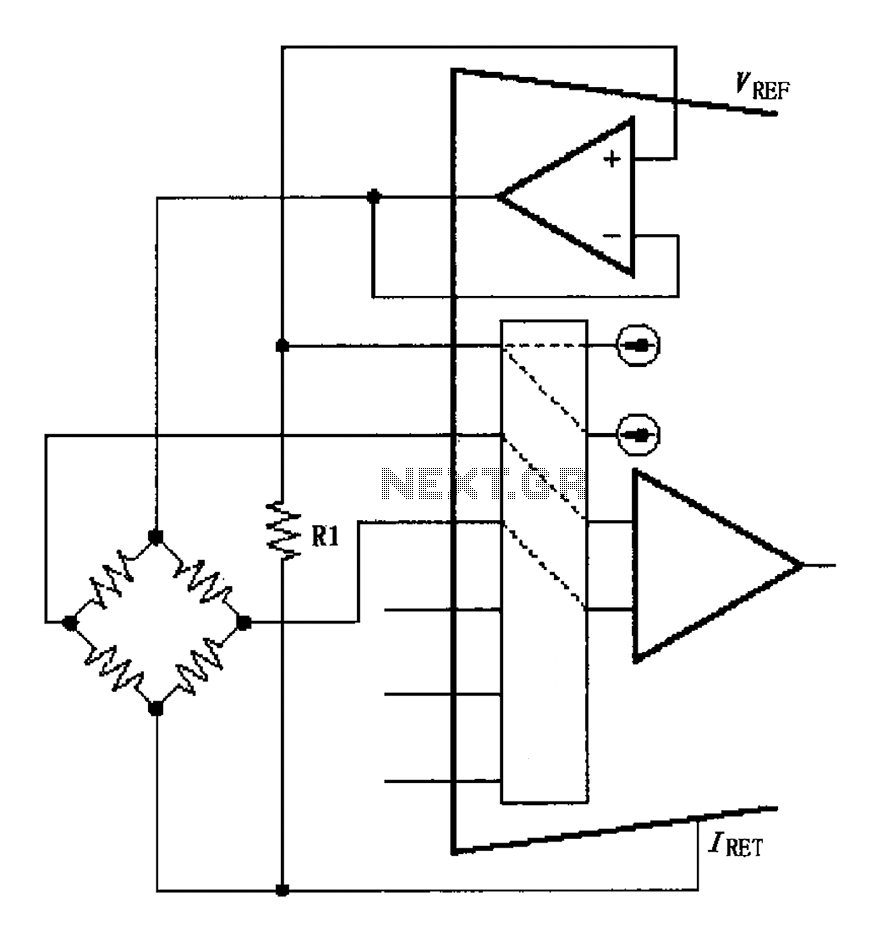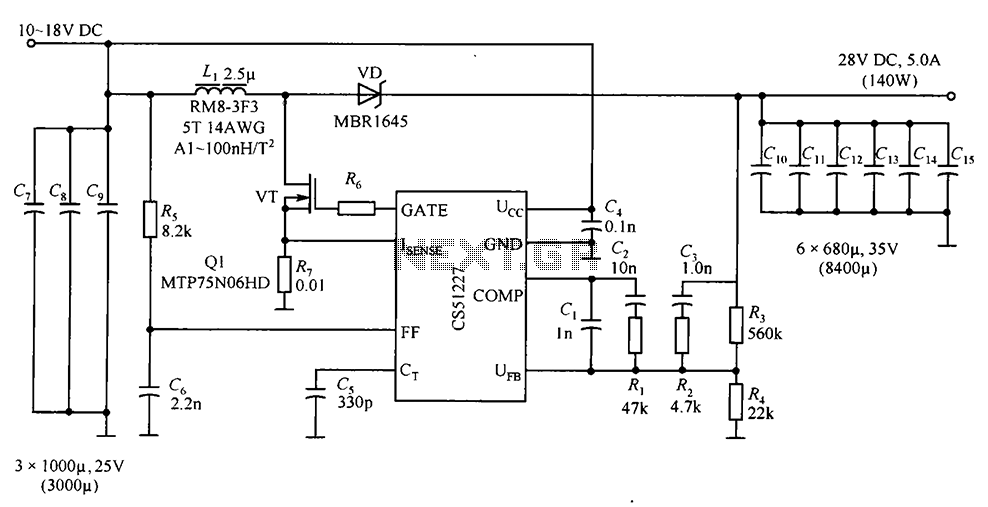
V-shaped torque motor speed control circuit
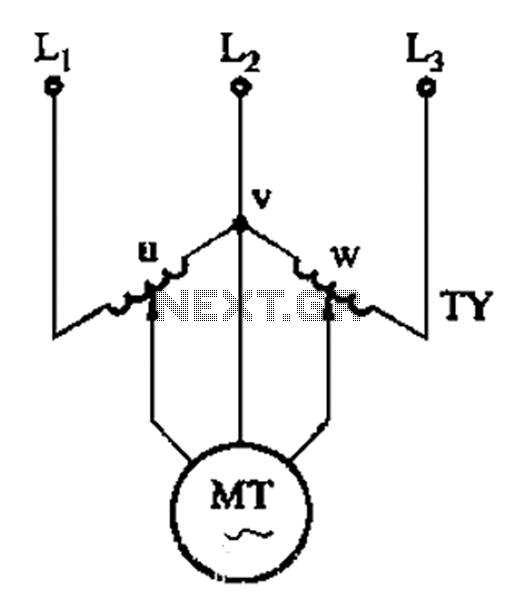
The circuit shown in Figure 3-177 utilizes two single-phase voltage regulators connected to a V-shaped configuration of single-phase regulators. This setup allows for the simultaneous adjustment of voltage and balance, enabling performance akin to a three-phase balanced adjustment.
The circuit in question employs two single-phase voltage regulators, which are crucial for maintaining a stable output voltage despite variations in load or input voltage. These regulators are arranged in a V-shaped configuration, optimizing the layout for efficient voltage regulation and balance. The design facilitates the simultaneous adjustment of two parameters: the voltage output and the balance of the system, ensuring that both aspects can be fine-tuned for optimal performance.
The regulators operate by utilizing feedback mechanisms that monitor the output voltage and make necessary adjustments to maintain the desired level. This is particularly important in applications where precise voltage levels are critical for the operation of other electronic components. The V-shaped arrangement enhances the thermal management of the regulators, as heat dissipation can be effectively managed across the layout.
Furthermore, the circuit's ability to achieve a performance level comparable to a three-phase balanced adjustment is noteworthy. This characteristic is particularly beneficial in applications where three-phase systems are not feasible or where a simpler single-phase solution is preferred. The symmetrical design allows for a balanced output across the regulators, minimizing the risk of voltage imbalances that could lead to inefficiencies or potential damage to connected loads.
In summary, the circuit presented in Figure 3-177 represents an innovative approach to voltage regulation, effectively combining the advantages of single-phase voltage regulators with a configuration that allows for enhanced balance and performance. The ability to adjust both voltage and balance simultaneously makes this circuit a versatile solution for various electronic applications. Circuit shown in Figure 3-177. It uses two single-phase voltage regulator and connected to a V-shaped, single-phase regulators when two concentric series of time-linked slippag e u and w simultaneously symmetrical slide, you can adjust the balance, with the same performance three-phase balanced adjustment .
The circuit in question employs two single-phase voltage regulators, which are crucial for maintaining a stable output voltage despite variations in load or input voltage. These regulators are arranged in a V-shaped configuration, optimizing the layout for efficient voltage regulation and balance. The design facilitates the simultaneous adjustment of two parameters: the voltage output and the balance of the system, ensuring that both aspects can be fine-tuned for optimal performance.
The regulators operate by utilizing feedback mechanisms that monitor the output voltage and make necessary adjustments to maintain the desired level. This is particularly important in applications where precise voltage levels are critical for the operation of other electronic components. The V-shaped arrangement enhances the thermal management of the regulators, as heat dissipation can be effectively managed across the layout.
Furthermore, the circuit's ability to achieve a performance level comparable to a three-phase balanced adjustment is noteworthy. This characteristic is particularly beneficial in applications where three-phase systems are not feasible or where a simpler single-phase solution is preferred. The symmetrical design allows for a balanced output across the regulators, minimizing the risk of voltage imbalances that could lead to inefficiencies or potential damage to connected loads.
In summary, the circuit presented in Figure 3-177 represents an innovative approach to voltage regulation, effectively combining the advantages of single-phase voltage regulators with a configuration that allows for enhanced balance and performance. The ability to adjust both voltage and balance simultaneously makes this circuit a versatile solution for various electronic applications. Circuit shown in Figure 3-177. It uses two single-phase voltage regulator and connected to a V-shaped, single-phase regulators when two concentric series of time-linked slippag e u and w simultaneously symmetrical slide, you can adjust the balance, with the same performance three-phase balanced adjustment .
